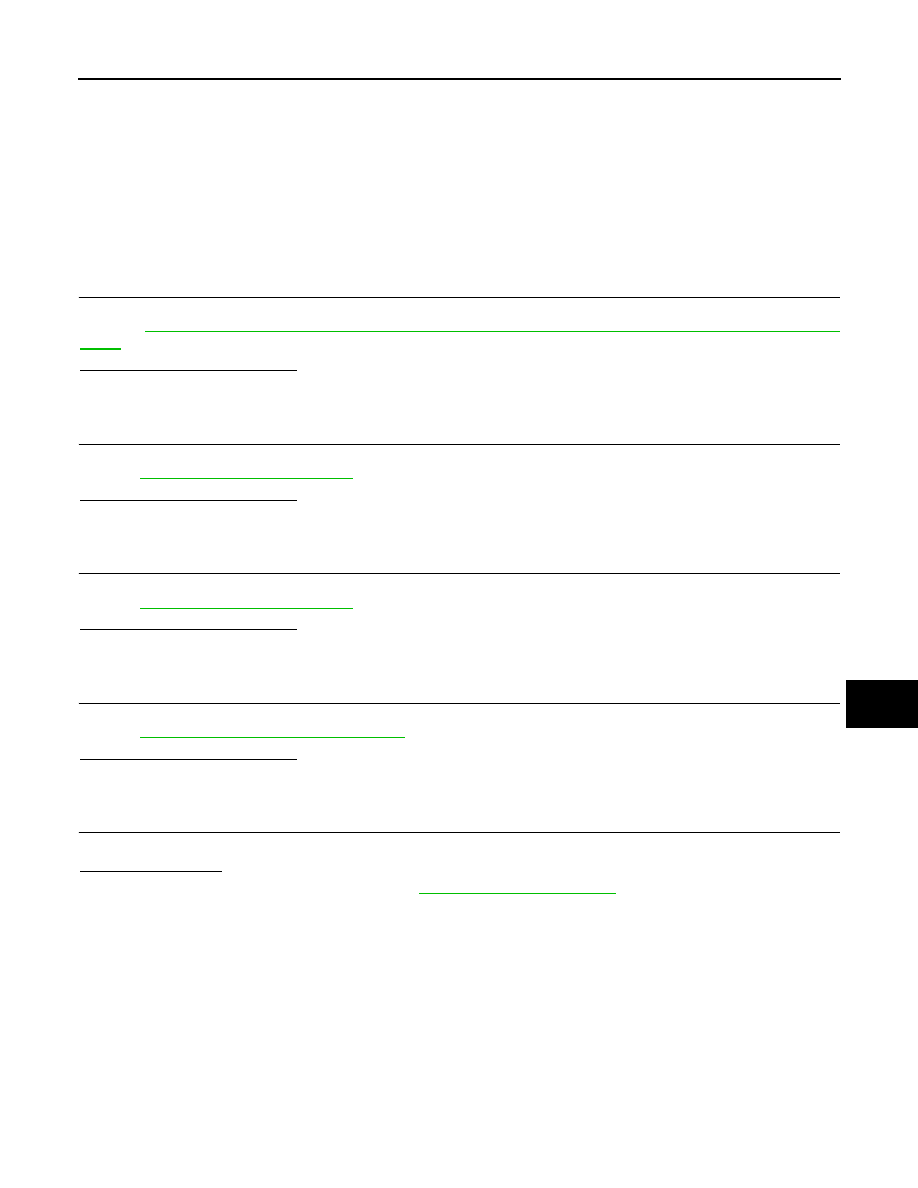Content .. 1058 1059 1060 1061 ..
Infiniti QX56 (Z62). Manual - part 1060

SUNROOF DOES NOT OPERATE PROPERLY
RF-23
< SYMPTOM DIAGNOSIS >
C
D
E
F
G
H
I
J
L
M
A
B
RF
N
O
P
SYMPTOM DIAGNOSIS
SUNROOF DOES NOT OPERATE PROPERLY
Description
INFOID:0000000006141238
• When auto operation does not operated.
• When does not stop fully open or fully closed operation.
Diagnosis Procedure
INFOID:0000000006141239
1.
PERFORM INITIALIZATION PROCEDURE
Initialization procedure is executed and operation is confirmed.
Refer to
RF-17, "ADDITIONAL SERVICE WHEN REPLACING CONTROL UNIT : Special Repair Require-
Is the inspection result normal?
YES
>> GO TO 2.
NO
>> Repair or replace the malfunctioning parts.
2.
CHECK SUNROOF MOTOR ASSEMBLY POWER SUPPLY AND GROUND CIRCUIT
Check sunroof motor assembly power supply and ground circuit.
Refer to
.
Is the inspection result normal?
YES
>> GO TO 3.
NO
>> Repair or replace the malfunctioning parts.
3.
CHECK VEHICLE SPEED SIGNAL CIRCUIT
Check vehicle speed signal circuit.
Refer to
.
Is the inspection result normal?
YES
>> GO TO 4.
NO
>> Repair or replace the malfunctioning parts.
4.
CHECK SUNROOF SWITCH
Check sunroof switch.
Refer to
RF-21, "Component Function Check"
.
Is the inspection result normal?
YES
>> GO TO 5.
NO
>> Repair or replace the malfunctioning parts.
5.
CONFIRM THE OPERATION
Confirm the operation again.
Is the result normal?
YES
>> Check intermittent incident. Refer to
GI-40, "Intermittent Incident"
.
NO
>> GO TO 1.